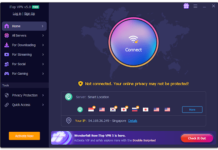What Exactly is Fiber Optic?
Simply put, fiber optics (or optical fiber or optical fibres) are long, skinny strands of pure glass from which electricity can be transmitted over long distances without loss. Fiber optics are ideally suited for use in optical communications systems because they transmit information in a clear and transmission over large distances without loss or distortion. Unlike electrical signals which have to travel through many media before reaching their final destination, light signals are packaged in small packets which only have to travel a single route to reach their final destination.
When it comes to transmitting information over large distances using light, fiber optic systems work just like radio and telephone networks. To transmit radio waves, you need to use mediums such as copper cables to to send signals via light you need to use fiber optic systems. One major difference between these systems is that optical fibers don’t transmit any electromagnetic interference. This means that fiber optic data can’t be decoded by electronic equipment such as security cameras or radar systems. If you need this technology for your business or personal use, then you need to invest in optical fiber networking.
The main reason for investing in fiber broadband services is to get high speed internet access for your home or office. With a typical internet connection, you can access the internet up to download around 20 megabits per second. If you want to enjoy even faster internet speeds, then you should consider investing in optical fibers. These types of networks are becoming increasingly popular with many people because of the amount of bandwidth that they provide as well as their ease of installation. These cables are also available in a variety of colors so you can easily select the one which best suits your needs.
Also Read:Sun xt Coupon Codes 2021
Fiber Optic Benefits
A major benefit of using fiber optics is that they are very secure. If you need to make copies of anything, there is no need to send the information over telephone lines because the optic cable will make it possible to make the copies online without having to send the information over those wires. Because these cables are thin, you won’t need to use any other forms of networking such as copper wires.
Although fiber optics have been around for decades, many people don’t realize how much they have changed over the years. For example, a single strand of optical fibers can transmit more information in a single minute than the electrical impulse sent through a telephone line. Also, you don’t have to worry about losing any information because the optical fibers are very secure. Also, the cost to install fiber optics has gone down dramatically and is now within the reach of most consumers.
When you connect fiber-optic cables to your computer networks, you are essentially bypassing the middleman and sending your information directly to the information storage device without having to go through any wires at all. While this might seem like something very complicated, it really isn’t. In fact, these days it really is a lot simpler than you might think. In addition to this, fiber-optic cables have the ability to transmit signals long distances, which makes them ideal for a lot of different applications. Also, because these signals are transmitted digitally, you can use them to send email and make instant phone calls at relatively inexpensive rates.
Also Read: 5 Types Of Digital Marketing You Should Know About
![What is Fiber Optic [Optical Fiber]? – Definition, Features, Types, Pros and Cons What is Fiber Optic [Optical Fiber]? – Definition, Features, Types, Pros and Cons](https://www.todaytechmedia.com/wp-content/uploads/2021/05/optical-fiber-min-696x378.png)










